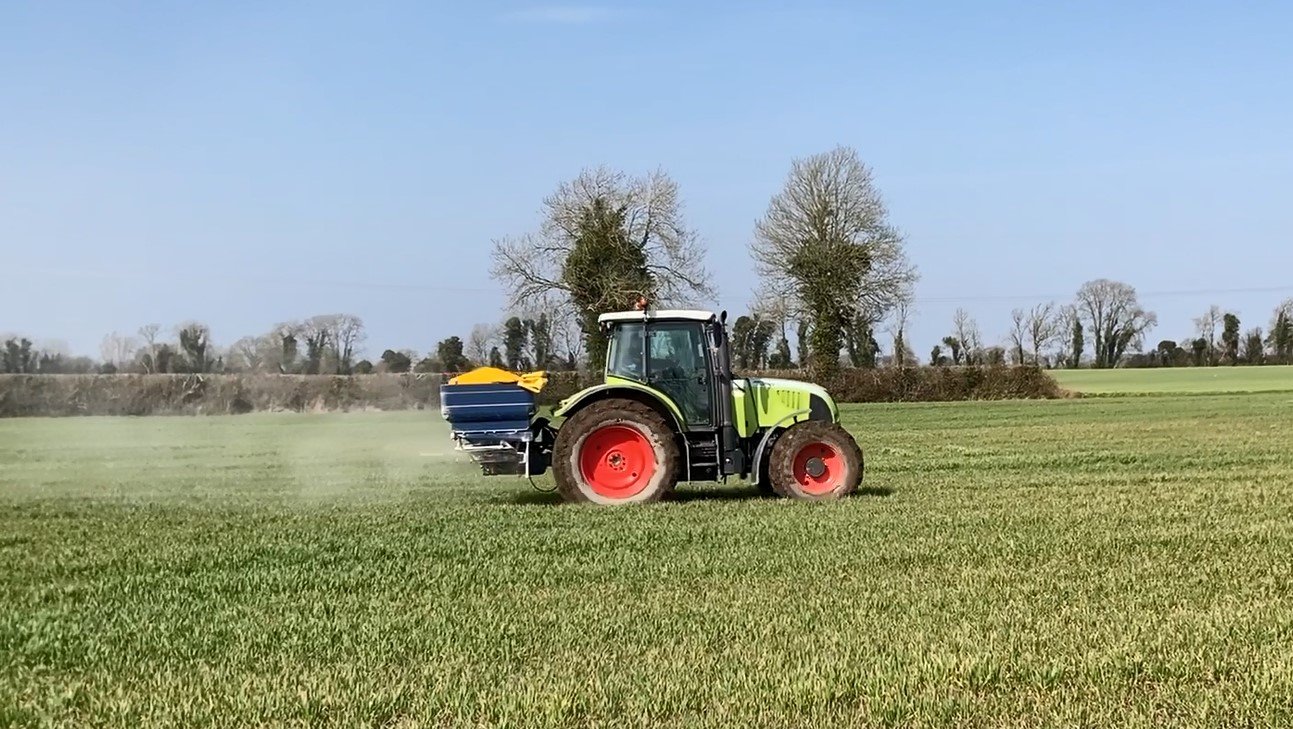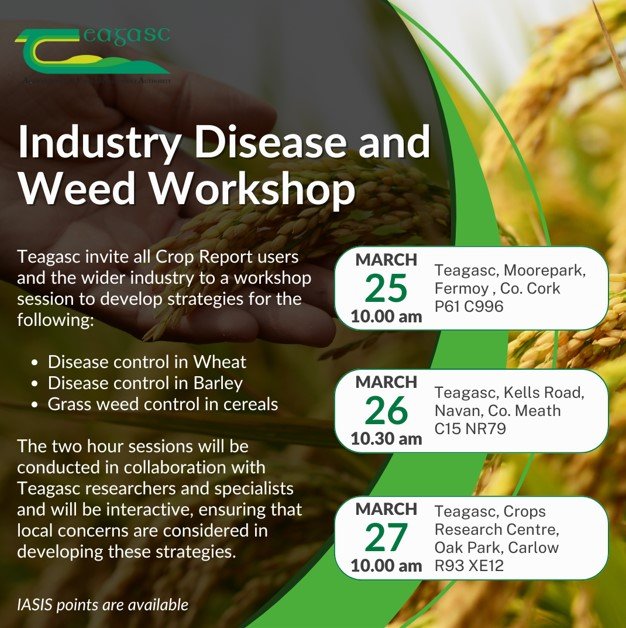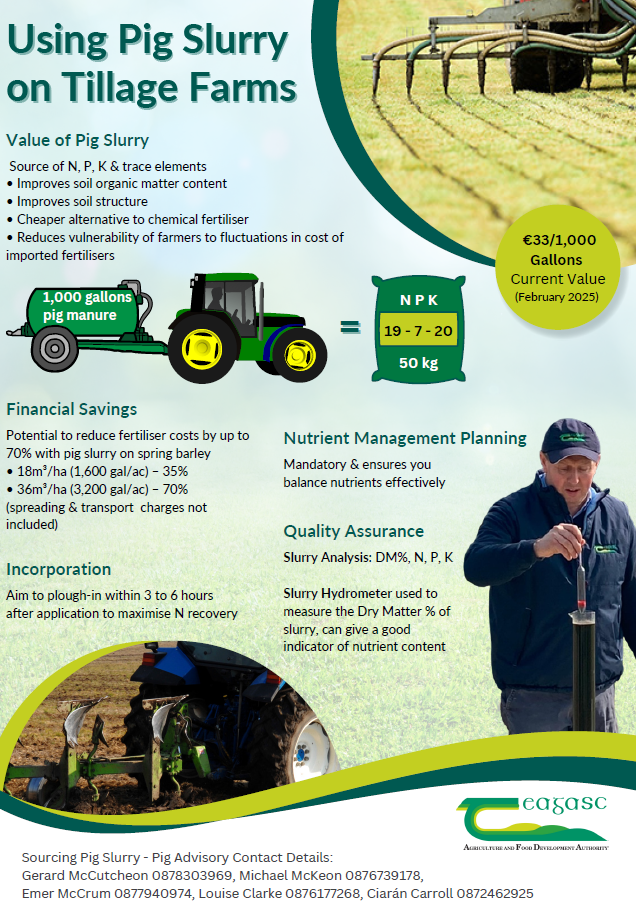
Teagasc Crop Report
Crop Report Update Number 2 2025
Crop Report Update Number 2 2025

To view the full report you must have an existing account with Teagasc ConnectEd.
Farmers sign in hereAlready have a ConnectEd account? Connected Client or Teagasc staff log in here
Winter Barley
Most growers are satisfied with winter barley this spring. In general crops have good ground cover and minimal bare patches. Most crops have received their first split of nitrogen which will help early growth. The main nitrogen application will be needed in the next 10-14 days as crops reach stem extension when demand increases. Currently, the majority of crops are at mid-tillering. However, some early-sown crops—particularly early maturing varieties like Joyau and Integral—are at or approaching growth stage 31.
Please create an account to view hidden content
Winter Wheat
Crops are starting to grow again as temperatures pick up over the last week or two. For the most part crops are in good condition however there are a number of crops that have had significant slug damage over the winter. These crops will have to be assessed over the coming weeks to see if they are viable to continue with.
Please create an account to view hidden content
Oilseed Rape
Crops are now now in stem elongation with green buds visible, so every effort needs to be made to scare off pigeons from continuing to graze crops. Most have received some fertiliser at this stage with many heavily grazed crops already received a second application of nitrogen.
Please create an account to view hidden content
Winter Oats
Winter oat crops are growing well and are starting stem extension although most are still a few weeks away from GS 30. Crops are generally clean from disease although many will need a herbicide application to control weeds in the coming weeks.
Please create an account to view hidden content
Spring Beans
The recent dry weather has provided an opportunity for tillage farmers to begin preparing land for sowing spring beans. Many farmers are particularly mindful of last year’s delayed harvest and are making a conscious effort to get crops in the ground earlier this season.
The financial outlook for spring beans remains attractive. Based on an average yield of 5.4t/ha (10 year national average), farmers could expect a gross output of almost €2,000/ha - beans €250/t & Protein aid €600/ha. Costs from the Teagasc Costs and Returns come in at €1,067/ha leaving a gross profit of almost €900/ha. Given these figures and current cereal prices, record breaking cereal yields would be needed to match the profitability of beans this spring.
Please create an account to view hidden content
Spring cereals
The spring cereal area in 2025 will be lower than in 2024 due to increased autumn planting. However, this decline will be partially offset by a reduced winter oilseed rape area and any decreases in bean and maize area. Some ground preparation has taken place in recent days, but very little has been sown so far. Sowing will begin in earnest during the next dry spell, starting with wheat, oats, and malting barley. there is sufficient barley and wheat seed but supply of oat seed is tight.
There is a great selection of spring barley varieties available to growers this season with good resistance to disease and excellent straw characteristics. To determine the required seed quantity, check the Thousand Grain Weight (TGW) on the seed bag. Use this value to calculate the seeding rate based on your target plant population and field conditions for wheat, barley and oats.
Industry disease and weed workshops
Following on from the workshops on disease and grass weed control at the National Tillage Conference in January, Teagasc are hosting a number of workshops on disease control in wheat and barley as well as grass weed control.
The two hour sessions will be conducted in collaboration with Teagasc researchers and specialists and will be interactive, ensuring that local concerns are considered in developing these strategies
The details of the workshop are as follows;

Pig slurry
Pig slurry is freely available in many areas and is a valuable source of nitrogen, phosphorous and potassium for spring crops. Pig farmers are keen to collaborate with tillage farmers, particularly regarding transport costs. Currently, pig slurry is valued at €33 per 1,000 gallons, equivalent to a bag of 19-7-20. To maximise its benefits, using a hydrometer and incorporating it within 3–6 hours is essential.
It is especially suitable for farmers with low index soils – NMP is required.
Any farmers that are interested in sourcing pig slurry, the contact details for the pig advisory team in Teagasc can be found at the bottom of the poster.

Here are some Teagasc videos demonstrating use of slurries on tillage crops;
Video 1; demonstration on signpost farm
Video 2; timing of slurry on winter cereals
Video 3; micronutrients in pig slurry and the value on cereals